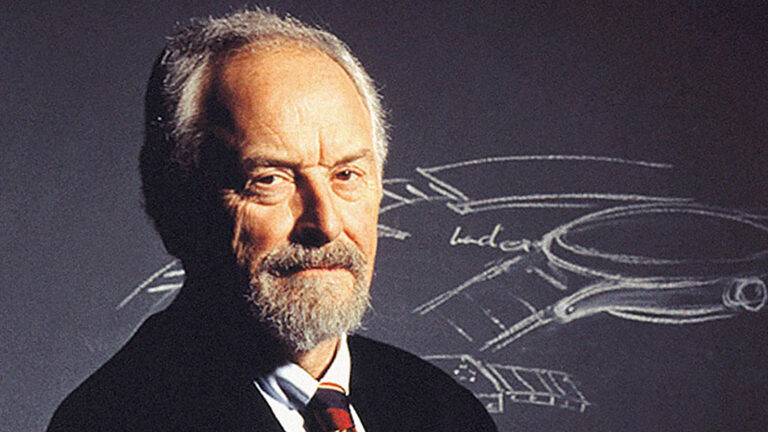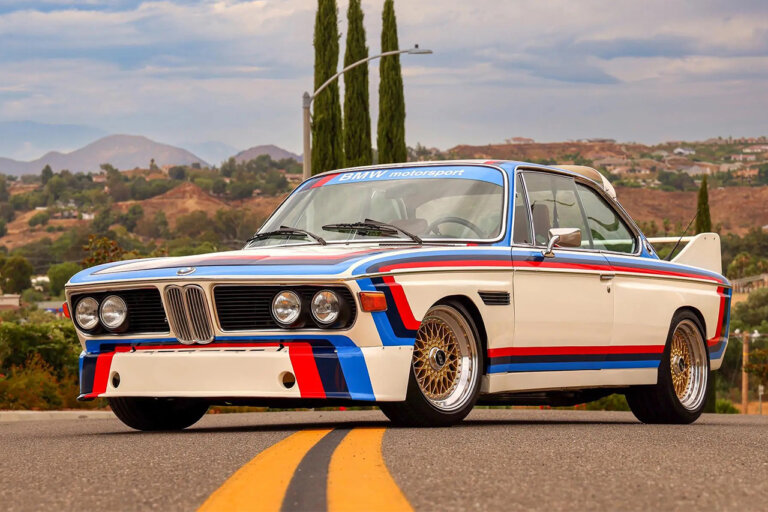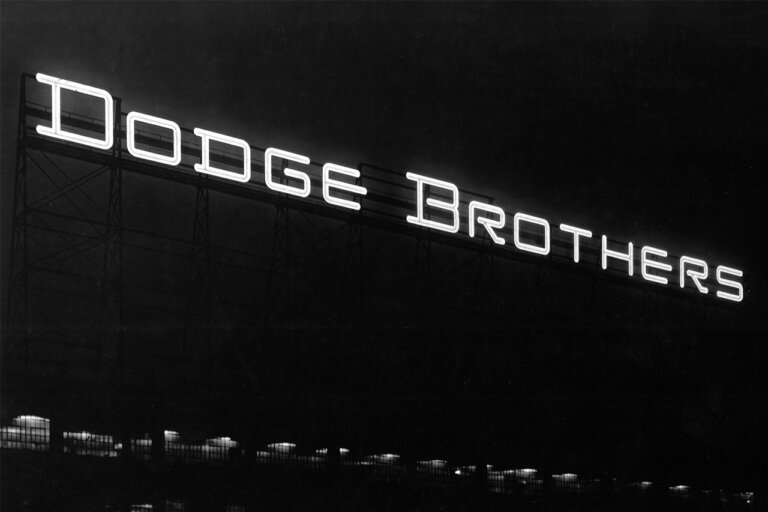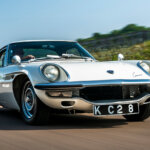Evolution VIII - X (2003-2016)
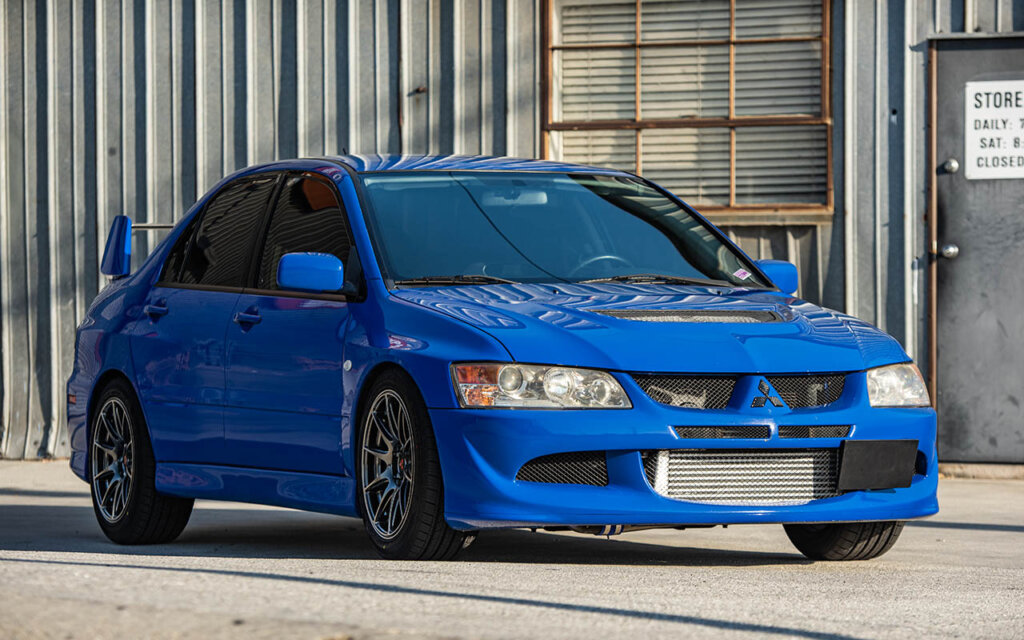
Source: Motofutura
Evolution VIII (2003-2005)
The Mitsubishi Lancer Evolution VIII made its debut in 2003, featuring notable enhancements such as 17-inch grey Enkei wheels, Brembo brakes, and Bilstein shocks to handle traction. It was equipped with a 5-speed manual gearbox and a 280 PS (206 kW; 276 hp) engine, delivering impressive performance. Originally introduced as a single model, its popularity in the U.S. led to the availability of four trims by 2005. The standard GSR model was sold in Japan, while the RS variant came with a simplified design, lacking certain components like interior map lights, power windows/doors, and a radio. The SSL trim offered additional features such as a sunroof, trunk-mounted subwoofer, and leather seats. The range was completed by the MR model, which boasted a revised limited-slip differential, aluminum roof, and a 6-speed manual gearbox. Various special editions were introduced in the United Kingdom, each with different power outputs.
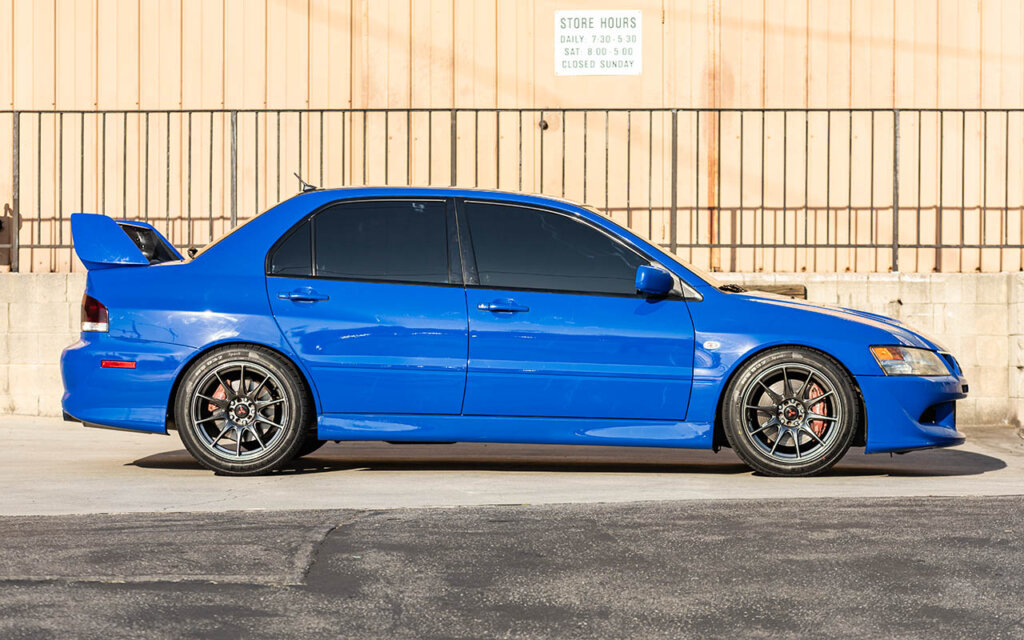
| Trim | Production | Engine | Power | Transmission | Drivetrain |
| RS, GSR, SSL & MR | 2003 – 2005 | 2.0L 4G63T I4 Turbocharged | > 276 HP / > 280 PS / > 206 kW | 5/6-Speed Manual | AWD |
With the introduction of the Evolution VIII, Mitsubishi included an automatic drivetrain option for the first time in the model lineup called the GT-A. The GT-A variant, produced only in 2002, featured distinct interior and exterior specifications. It had diamond-cut finish 17-inch alloy wheels, clear rear light lenses, and different headlights compared to the standard Evolution VII models. The GT-A also offered various spoiler options and a smooth bonnet without air-grills, designed for improved aerodynamics at high speeds. The interior of the GT-A showcased chromed door handles, a modified instrument panel, and additional sound deadening for enhanced comfort. The 5-speed automatic gearbox in the GT-A employed “fuzzy logic” technology, adapting gear change timings and kick down reactions based on the driver’s behavior. Although slightly lower in power compared to the manual version, the GT-A provided a more refined driving experience.

Evolution IX (2005-2007)

Source: Motofutura
| Trim | Production | Engine | Power | Transmission | Drivetrain |
| RS, GT, GSR & MR | 2005 – 2007 | 2.0L 4G63T I4 Turbocharged | > 287 HP / > 291 PS / > 214 kW | 5/6-Speed Manual 5-Speed Automatic | AWD |
The Mitsubishi Lancer Evolution IX was introduced in Japan on March 3, 2005, and showcased at the Geneva Motor Show for the European market on the same day. It featured a 2.0L 4G63 Inline-four engine with MIVEC technology, producing 291 PS (214 kW; 287 hp) of power and 392 N⋅m (289 lb⋅ft) of torque. The North American market saw the model displayed at the New York International Auto Show the following month. The Evolution IX came in different trims with variations in performance capabilities. The RS model, designed for rally and racing teams, was stripped of unnecessary features to reduce weight, while the MR model retained premium features like Bilstein shocks, a 6-speed manual transmission, and Recaro bucket seats.

The US versions of the Lancer Evolution IX did not include the Active Yaw Control (AYC) but still had the Active Center Differential (ACD). The ACD offered three driving modes: Tarmac, Gravel, and Snow, which influenced the behavior of the center differential. The Evolution IX also featured other improvements such as a redesigned front end for better airflow and a closer gear ratio for the 5-speed manual transmission.
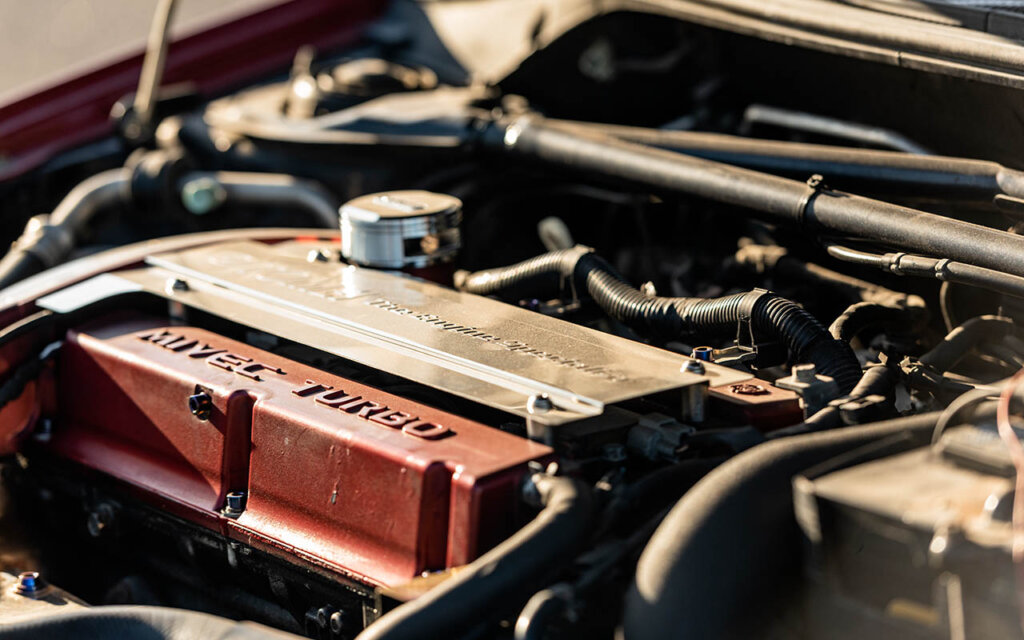
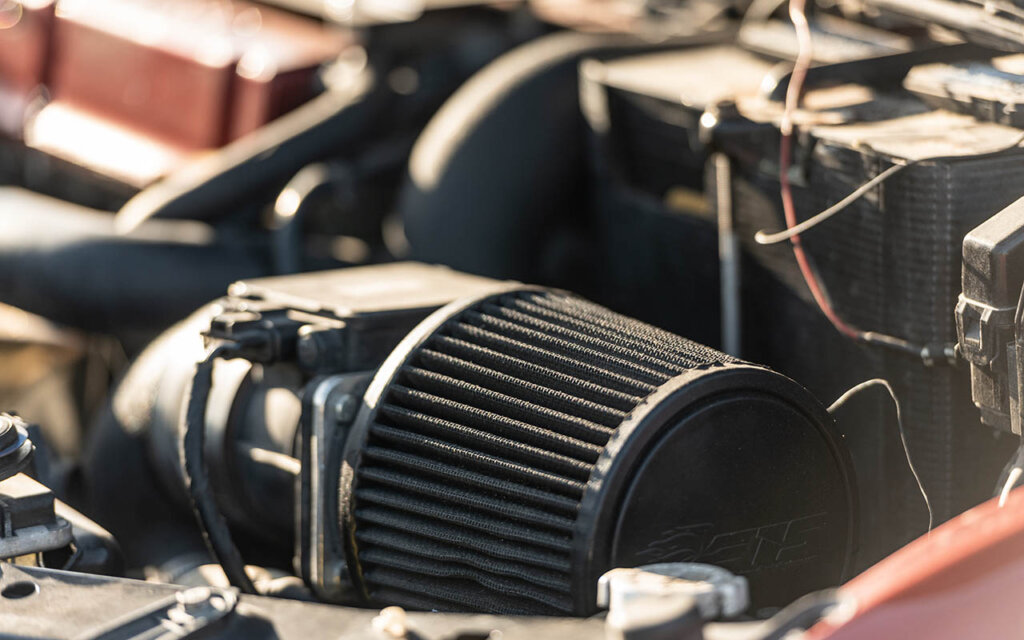
Mitsubishi also released an Evolution IX wagon variant in GT, GT-A, and MR versions. The wagon models came with either a 6-speed manual or a 5-speed automatic transmission. They were exclusively sold in Japan but were imported to other countries as well. Approximately 2,500 wagons were produced, with the majority featuring manual transmissions and the MIVEC engine. The Evolution Wagon had some differences compared to the sedan, such as a slightly heavier weight due to structural modifications and a different front seat design for improved accessibility. Some wagons were exported and converted to left-hand drive for use in countries like Germany and Russia.

Source: Tokumeigakarinoaoshima via Wikipedia
Evolution X (2007-2016)

Source: Mitsubishi Motors
| Trim | Production | Engine | Power | Transmission | Drivetrain |
| MR/GSR | 2007 – 2016 | 2.0L 4B11T Turbocharged I4 | 276 – 291 HP / 280 – 295 PS / 206 – 217 kW | 5-Speed Manual 6-Speed DCT | AWD |
| FQ | 2007 – 2016 | 2.0L 4B11T Turbocharged I4 | 300 – 360 HP / 304 – 364 PS / 224 – 268 kW | 5-Speed Manual 6-Speed DCT | AWD |
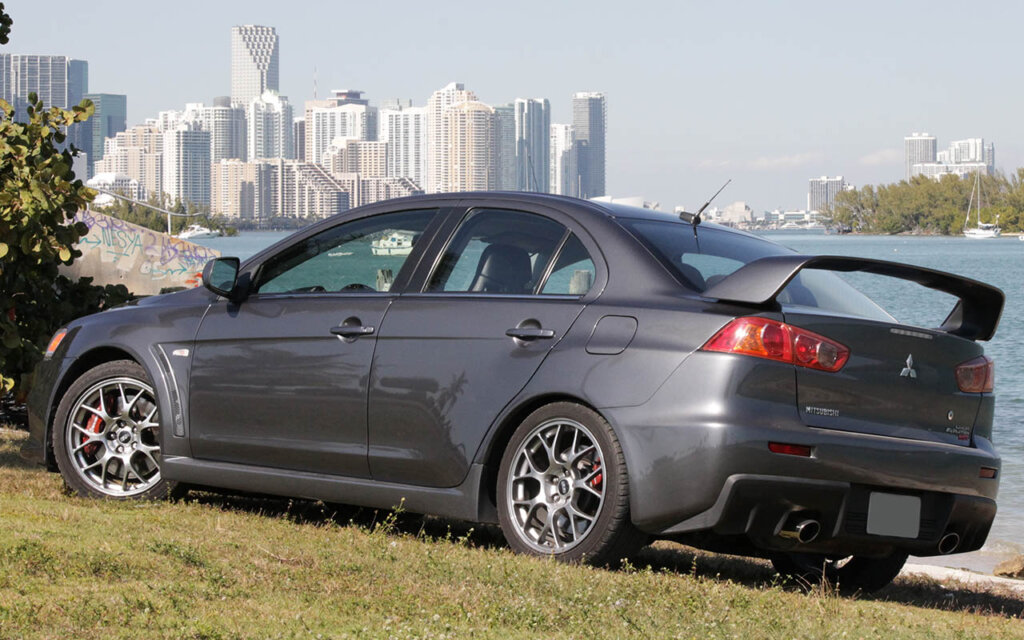
Source: XD4rkxL1ghtx via Wikimedia Commons
In 2005, Mitsubishi unveiled the Concept-X, a concept version of the next-generation Evolution, at the Tokyo Motor Show. Designed by Omer Halilhodžić at Mitsubishi’s European design center, the Concept-X provided a glimpse into the future of the Evolution series. The Lancer Evolution X sedan, which followed, featured a newly designed 2.0L turbocharged engine called the 4B11T. The power and torque output varied across different markets, but all versions had a minimum of 280 PS (206 kW; 276 hp). The UK models received special attention from Mitsubishi UK, aligning them with the previous MR Evolutions with the FQ badge and expected power options ranging between 300 hp (224 kW) and 360 hp (268 kW).
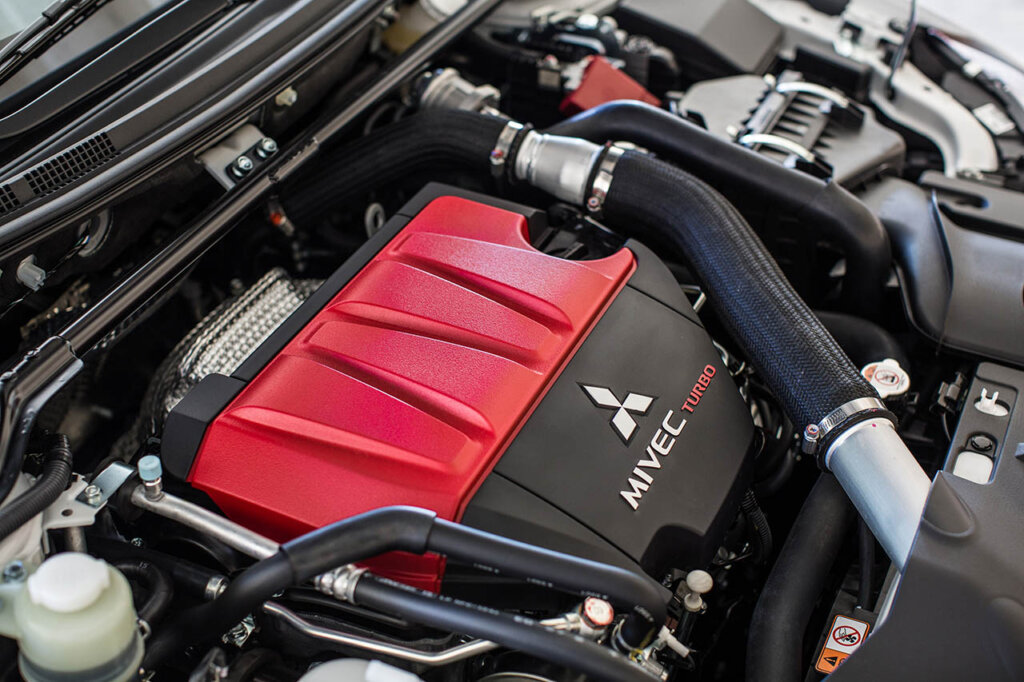
Source: Mitsubishi Motors

